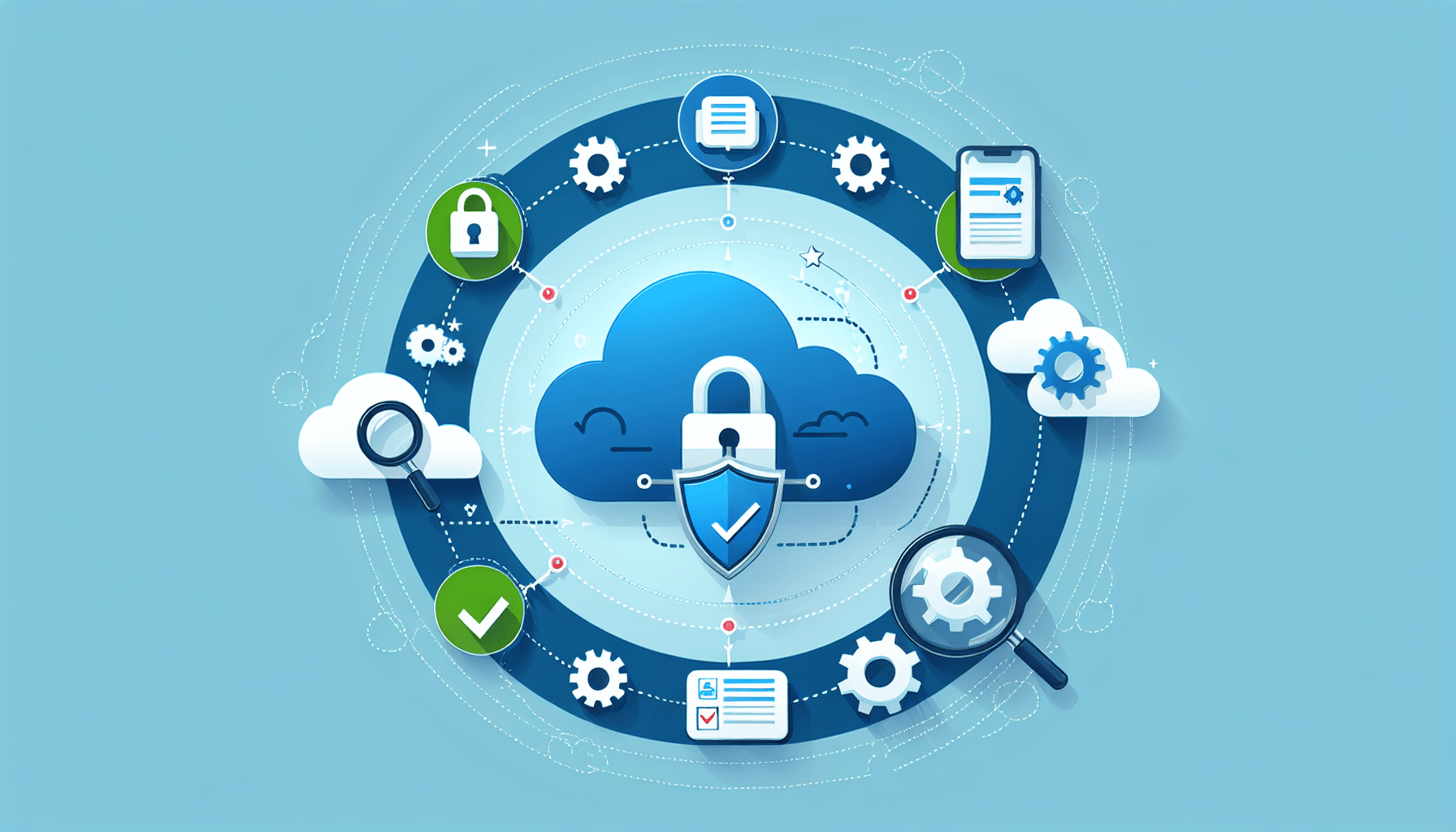In today’s complex and evolving digital landscape, ensuring the security of your hybrid IT environment is critical. As organizations continue to adopt cloud technologies alongside traditional on-premises systems, the need for thorough cloud security assessments becomes more important than ever. This article explores the key considerations that should be taken into account when evaluating the security of your hybrid IT environment. By following these best practices and guidelines, you can enhance the overall security posture of your organization and minimize potential threats and vulnerabilities.
Cloud Security Assessments For Hybrid IT Environments: Key Considerations
Have you been considering implementing cloud solutions in your organization’s IT environment, but are unsure about the security risks associated with such a move? Cloud security assessments are crucial for ensuring the protection of your data and systems, especially in hybrid IT environments where both on-premises and cloud-based systems coexist. In this article, we will explore the key considerations to keep in mind when conducting cloud security assessments in hybrid IT environments.

Understanding the Hybrid IT Environment
Before diving into cloud security assessments, it’s important to understand what a hybrid IT environment entails. A hybrid IT environment is a combination of on-premises infrastructure and cloud services. This setup allows organizations to leverage the benefits of both traditional IT and cloud computing, taking advantage of scalability, flexibility, and cost-efficiency while maintaining control over sensitive data through on-premises solutions.
When assessing cloud security in a hybrid IT environment, you must consider the various components and connections between on-premises systems and cloud services. This includes data transfers, network configurations, identity and access management (IAM), and compliance requirements.
Identifying Security Risks and Threats
The first step in conducting a cloud security assessment is to identify potential security risks and threats that your organization may face in a hybrid IT environment. This involves analyzing the vulnerabilities of both on-premises and cloud-based systems, as well as the interactions between them.
Common security risks in hybrid IT environments include data breaches, insider threats, misconfigurations, and compliance violations. By conducting a thorough risk assessment, you can prioritize vulnerabilities and develop mitigation strategies to protect your organization’s data and systems.
Remember, security risks are constantly evolving, so regular assessments and updates to your security measures are essential to stay ahead of potential threats.
Conducting Vulnerability Scans and Penetration Testing
One of the most effective ways to identify security risks in your hybrid IT environment is by conducting vulnerability scans and penetration testing. Vulnerability scans involve using automated tools to detect weaknesses in your systems, such as outdated software, misconfigurations, and insecure network connections.
Penetration testing, on the other hand, simulates real-world cyber attacks to identify how well your systems can withstand malicious activities. By combining both approaches, you can gain a comprehensive understanding of your organization’s security posture and make informed decisions on mitigation strategies.
Implementing Secure Configuration Management
In a hybrid IT environment, maintaining secure configurations across on-premises and cloud-based systems is crucial for preventing security incidents. Ensure that all systems are configured according to best practices, including firewall settings, access controls, encryption protocols, and software updates.
Implementing secure configuration management tools can help automate these tasks and ensure consistency across your IT environment. Regular audits and monitoring are also essential to identify deviations from secure configurations and address them promptly.
Data Protection and Encryption
Data protection is a key aspect of cloud security assessments in hybrid IT environments. With data being transferred between on-premises and cloud systems, it’s essential to encrypt sensitive information to prevent unauthorized access and data breaches.
Implement strong encryption protocols for data at rest and in transit, including TLS for network communications and AES for data storage. Consider using key management solutions to securely store and manage encryption keys, ensuring that only authorized users can access encrypted data.
Data Classification and Access Controls
To enhance data protection in a hybrid IT environment, it’s important to classify data based on its sensitivity and implement access controls accordingly. By categorizing data into different levels of confidentiality, you can restrict access to sensitive information and prevent unauthorized users from viewing or modifying it.
Implement role-based access controls (RBAC) to assign permissions based on user roles and responsibilities, limiting access to data and systems to only those who need it for their job functions. Regularly review and update access controls to ensure that they align with current security policies and compliance requirements.
Identity and Access Management (IAM)
Identity and access management (IAM) is a critical component of cloud security assessments in hybrid IT environments. IAM involves managing user identities, roles, and permissions to ensure that only authorized users can access resources and data.
Implement strong authentication methods, such as multi-factor authentication (MFA) and biometric verification, to enhance the security of user accounts. Regularly review user access rights and permissions to prevent unauthorized access and maintain least privilege principles.
Single Sign-On (SSO) and Federation Services
For a seamless user experience in a hybrid IT environment, consider implementing single sign-on (SSO) and federation services to allow users to access multiple systems and applications with a single set of credentials. SSO enhances usability while reducing the risk of password-related security incidents.
Federation services enable secure authentication and authorization across different IT environments, allowing users to access resources in both on-premises and cloud systems without compromising security. By integrating SSO and federation services, you can streamline user access management and enhance security in your hybrid IT environment.

Compliance and Regulatory Requirements
Compliance with industry regulations and data protection laws is a key consideration in cloud security assessments for hybrid IT environments. Depending on your organization’s industry and geographic location, you may be subject to specific compliance requirements that dictate how data should be protected and managed.
Ensure that your cloud security measures align with relevant regulations, such as GDPR, HIPAA, PCI DSS, and SOX, to avoid potential penalties and legal consequences. Conduct regular audits and assessments to verify compliance with industry standards and make necessary adjustments to your security policies.
Incident Response and Disaster Recovery
Despite proactive security measures, security incidents can still occur in a hybrid IT environment. Having a robust incident response plan and disaster recovery strategy in place is essential for minimizing the impact of security breaches and ensuring business continuity.
Develop an incident response plan that outlines the steps to take in the event of a security incident, including detection, containment, eradication, and recovery. Test your incident response plan regularly to identify gaps and improve response times to security threats.
Backup and Restore Procedures
Backup and restore procedures are critical components of disaster recovery in a hybrid IT environment. Ensure that data is regularly backed up and stored securely in off-site locations to prevent data loss in the event of a security incident or system failure.
Test backup and restore procedures to verify data integrity and recovery capabilities, ensuring that critical systems can be restored quickly and efficiently. Consider implementing automated backup solutions to streamline the backup process and reduce the risk of human error.
Conclusion
Cloud security assessments in hybrid IT environments are essential for protecting your organization’s data and systems from evolving security threats. By understanding the key considerations outlined in this article, you can enhance the security posture of your IT environment and mitigate potential risks effectively.
Remember to regularly assess and update your cloud security measures to align with current best practices and industry standards. By prioritizing security in your hybrid IT environment, you can reduce the likelihood of security incidents and safeguard your organization’s sensitive information.



